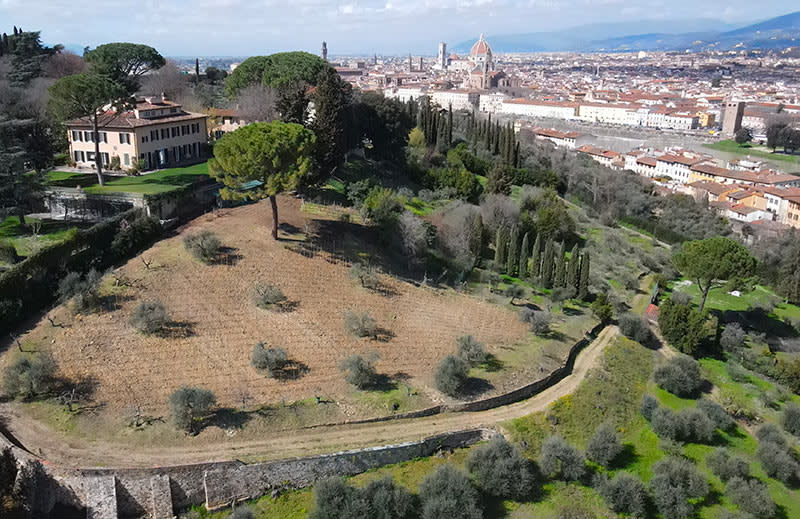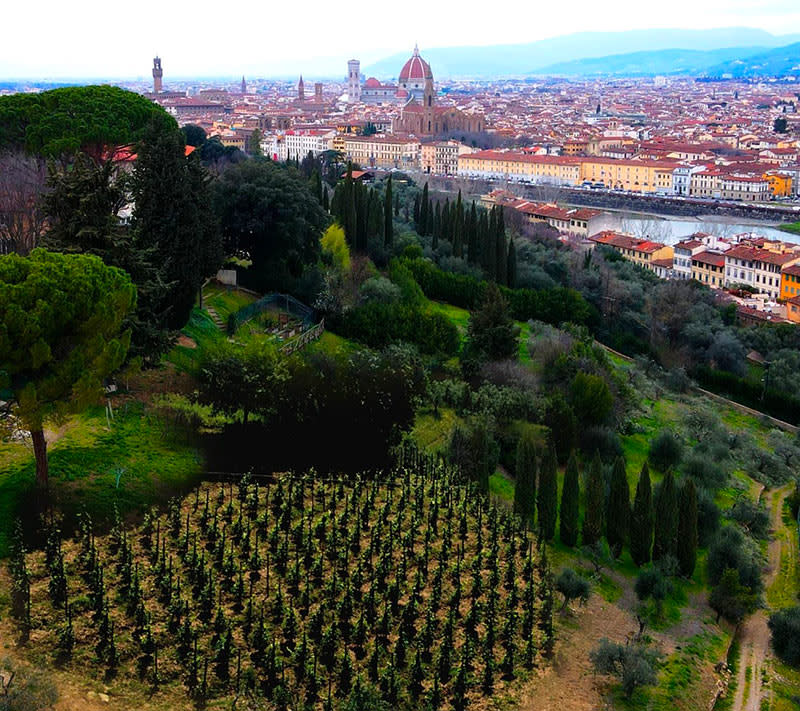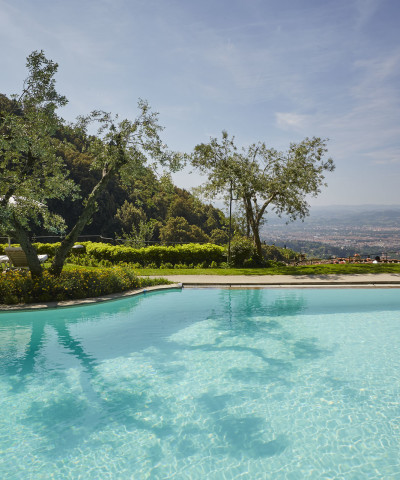A vineyard in the city
Everything you don't know about Florence's first modern urban vineyard
Did you know that there is a modern urban vineyard in Florence?
Comprising just a few rows of vines until yesterday, Vigna Michelangelo, Florence's first modern urban vineyard, has renewed its vine stock by planting 700 new plants. The land, facing north-east, is managed by the Fittipaldi women's farm in Bolgheri, chaired by Maria Fittipaldi Menarini who, with her four daughters Carlotta, Giulia, Serena and Valentina, has launched into this project with conviction and enthusiasm (we have already told you about it HERE).
Vigna Michelangelo has now joined the U.V.A. (Urban Vineyards Association), which groups together, among others, city vineyards in Turin, Milan, Venice, Siena, Catania and abroad Vienna, Paris, New York, creating a global network of cities that embrace urban viticulture. Among other things, next 27 October will also be the first World Urban Vineyard Day: an opportunity to spread the culture and symbolism of the urban vineyard.
 Maria Fittipaldi Menarini con Carlotta, Serena, Valentina e Giulia
Maria Fittipaldi Menarini con Carlotta, Serena, Valentina e GiuliaHow the project was born
The vineyard is seen as an element capable of recomposing the rural, historical and landscape heritage typical of an urban community still far from industrialisation. A project capable of enhancing biodiversity and contributing to urban sustainability. The project was launched on 29 September 2021, then presented to the press on 22 April 2022, and envisaged the complete reconversion of the planting with the insertion of vines to be grown using the alberello system, compatible with the slope of the land, in symbiosis with the olive trees already in production. The varieties were chosen with historical care from among the most traditional Tuscan varieties, including those at risk of extinction because they are not very profitable, but of very high quality.
The technical aspect is followed by some of the best professionals in Tuscany, such as agronomist Stefano Bartolomei and oenologist Emiliano Falsini. ‘The vineyard we went to create,’ Bartolomei says, ’is a garden vineyard and will be perfectly integrated with the surrounding environment to maintain the characteristics of the landscape. ‘With the Michelangelo Vineyard,’ continues Emiliano Falsini, ‘the first Urban Vineyard project in Florence has taken shape. An ambitious, fascinating and evocative project in one of the most beautiful and evocative settings of the city. An important commitment aimed at recovering the ancient viticulture that has always been present in the city, cradle of the Renaissance, and where wine has represented an important distinguishing mark throughout history.’
The area destined for the vineyard had been prepared in the previous months, with a cleaning of extraneous plants and larger stones. Wooden stakes were then planted at the approximately 40 cm excavation needed to accommodate the rooted cuttings.
For the planting, the alberello form was chosen, the oldest known form of training, already practised by the Greeks and Romans, but also the most qualitative and costly: it allows the arboreal development of the plant to be very well controlled and kept limited in favour of better cluster growth. In practice, we do not have the usual rows with iron wires, but each vine is protected and rests on a small wooden stake. The vines of the Michelangelo Vineyard, in short, will be cared for and pampered affectionately to produce an unusual wine. The bunches are more accessible and easier to keep under control, to the full advantage of the ripeness and quality of the grapes. The so-called ‘quincunx’ shape was chosen for the planting. Each sapling stands on the vertices of a square that has another vine in the centre, like the face of a dice with the number 5. The visual aspect will be scenically spectacular: the rows can be travelled along, across and diagonally on foot or with small cars without encountering any obstacles. On 14 March, the rooted cuttings were buried in the holes, leaving the upper part to emerge by about 6 cm, then immediately watered with at least 10 litres of water per plant. Lots of water to have a great wine tomorrow.
 Come si presenta Vigna Michelangelo oggi
Come si presenta Vigna Michelangelo oggi Come sarà la Vigna Michelangelo, Firenze
Come sarà la Vigna Michelangelo, FirenzeWhat will the future hold for the Michelangelo Vineyard?
The rooted cuttings will only bear their first fruit suitable for vinification in three years' time, to reach the pinnacle of quality much later. Wine requires patience, but in the meantime the date is for the 2027 harvest with the production of the first cask of wine with the full Michelangelo vigour. ‘About 700 bottles will be made from that cask,’ Maria concludes, ‘to be sold on the international market through auctions for charitable purposes of social support. The aim of the vineyard, however, is not only wine, but the relationship that is created between man, earth and air, a relationship that redefines the sterility of cement and asphalt with the search for mutual respect'.














